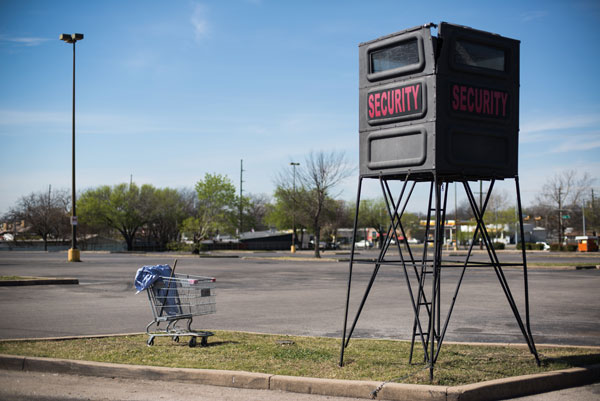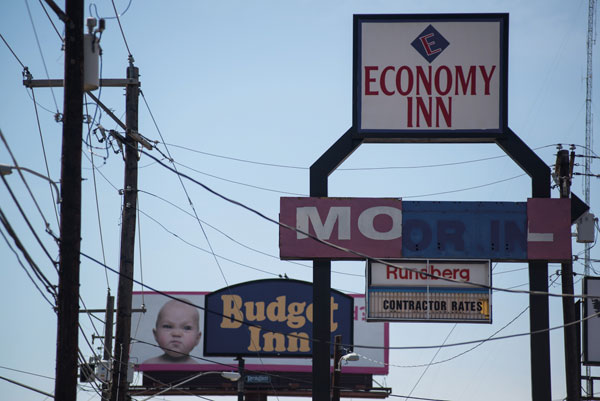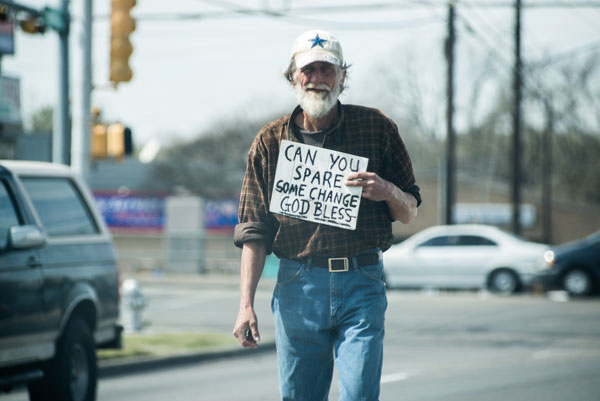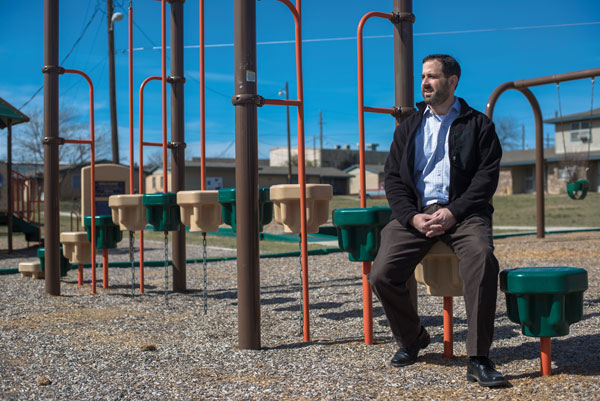Sociologist Works to Reduce Crime in Austin Neighborhood
Struggles in the Rundberg neighborhood of Austin are evident at deteriorating apartments and trash-strewn vacant lots. But pride and hope are plentiful too, as many residents spruce up their homes, pitch in at community parks and enjoy new recreation centers.
Alarming police statistics reveal another layer of the story.
This nearly six-square-mile zone containing 5 percent of Austin’s population accounts for a disproportionate share of the city’s violent crimes, property crimes and other violations that include weapons offenses and prostitution.
“You have a lot of theft and a lot of drug dealing, burglary and prostitution,” says David Kirk, an associate professor of sociology at The University of Texas at Austin, as he drives along pointing out problem spots near Rundberg Lane. “The police are here all the time.”
The Austin Police Department is searching for ways to turn the trend around. That’s where Kirk and his university research come in.
With a three-year, $1 million grant from the U.S. Justice Department, the police department and community leaders are working with Kirk on the Restore Rundberg project. The grant will be used to employ innovative policing strategies while also revitalizing the neighborhood in other ways.
The overall goal: To improve the Rundberg neighborhood in a manner that will be sustainable into the future.
“We’re looking for results,” says police Commander Mark Spangler, the project manager and lead of the Restore Rundberg law enforcement team. “We want to use this initiative as a way to bring forward a lasting change.”

The Restore Rundberg territory, located in north Austin next to a stretch of Interstate 35, covers only 2 percent of the city geographically. Yet during a five-year period from 2007-11 the area accounted for 11 percent of overall violent crime such as murder and rape; 7 percent of property crime like burglary and auto theft; and 9 percent of a crime category that includes criminal mischief, prostitution and narcotics offenses. Much of the crime is concentrated in only a few blocks.
The Rundberg area was identified as “distressed” in the Justice Department grant awarded through the Byrne Criminal Justice Innovation Program, part of President Barack Obama’s Neighborhood Revitalization Initiative. High poverty rates and a large number of ex-prisoners re-entering the neighborhood contribute to the problematic environment, according to Kirk.
“Crime does concentrate,” Kirk says. “It requires targeted police resources.”
Kirk, a faculty research associate of the university’s Population Research Center, will look at a combination of police practices and social factors in developing an action plan. He has centered his academic work on neighborhoods and crime, prisoner re-entry to society and the effects of criminal sanctions on future life chances. The Restore Rundberg project brings his university work into Austin neighborhoods.
Where children go to school, their neighborhood conditions, and the culture they are exposed to can affect their behavior and lead to cynicism about law enforcement, Kirk says. Residents of some communities may believe law officers are intent on harming them, so they don’t turn to the police for help, instead relying on what they view as self-defense.
“They take matters into their own hands,” Kirk says. “They just are responding to situations.”
Addressing the quality of schools, availability of jobs and the prevalence of poverty are key to revitalizing a neighborhood, but so is improving a community’s perception of law enforcement, he says.

Police have tried a number of different initiatives in the Rundberg area with limited success, Spangler says, explaining that the police department doesn’t want to keep trying the same tactics and expecting a different outcome.
Certain types of police patrols and arrests can be more effective than others, Kirk says. For example, police officers randomly patrolling areas to give the impression of an omnipresence does not lower crime nearly as much as focused attention and resources on crime “hot spots.”
Another policing strategy, known as problem-oriented policing, involves resolving the underlying reasons for crime, such as using nuisance abatement to control a drug house or a neglectful landlord. Other research suggests looking closely at the social network of criminals and targeting enforcement on the power broker at the middle of a crime group. “
It’s a very analytical and strategic way to go about it,” Kirk says. “We’ll learn something through innovative practices and my evaluation.”
After the project’s first planning year, which began in January, the second year will involve implementing the plan. In the third year Kirk will analyze what has been established.
A gathering in December for neighborhood residents and business owners at a local high school attracted some 100 people interested in the project. Since then, Kirk and Spangler have been holding frequent meetings with smaller groups of stakeholders for additional input on using the grant money. These small group meetings will continue throughout the threeyear period of the grant.
“I’ve been getting to know the people of the neighborhood associations,” Kirk says, explaining that community buy-in is a major component to ensure positive changes can take hold and endure. “One of the challenges for the project is: How do we harness this energy?”

The Rev. Karl Gronberg of Gethsemane Lutheran Church, who came to the neighborhood 41 years ago and is working with the Restore Rundberg project, says though some view the area as troubled, it’s also an exciting and diverse place to live. Newcomers are moving in to be closer to downtown and residents are showing leadership, he says.
“I see such a vitality emerging, and we want to tap into that,” he says. “The challenges are to get more and more people to feel power in their life to take this on.”
The presence of Kirk and his research highlights ties between The University of Texas at Austin and the community and shows how academic endeavors are connected to people’s lives, Gronberg adds.
“That human dimension is crucial,” he says. “It jumps off the page and says, ‘This is real stuff. This is the stuff of life.’”
Some aspects of the project will focus on clearing away neighborhood signs of disorder that can indirectly contribute to crime, say Kirk and Spangler. They want to crack down on city code violations like abandoned cars and apartments in need of repairs.
Spangler has a special attachment to the Rundberg area. It’s where he began his law enforcement career on patrol for the Austin Police Department in 1986. Since then, he’s seen a marked decline in conditions, though, like Gronberg, he points out recent improvements.
Those include a children’s playscape in one cluster of low-income apartments and the city’s 5-year-old Gus Garcia Recreation Center in an adjoining neighborhood. It’s equipped with a gym, fitness center and computer room and hosts everything from senior citizen socials to art programs to young men’s basketball games. There is also a new YMCA in the neighborhood.
The area is getting a new elementary school, and Gronberg notes that residents are volunteering to create pocket parks and work in community gardens.
Enthusiastic residents, Kirk’s research and the police department’s efforts all will be instrumental in the success of the Restore Rundberg project, Spangler says. “Each one of these have to interlock,” says Spangler, who is optimistic. “I love this area. It has great potential.”
Banner image: David Kirk, associate professor of sociology and Population Research Center affiliate, at the playground of the Georgian Manor public housing community.
